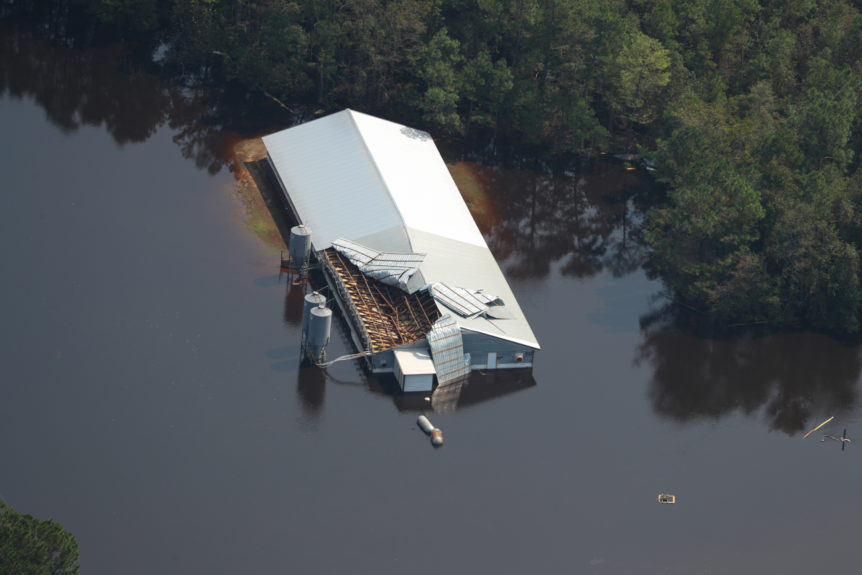Days after Hurricane Florence, North Carolina continues to struggle to recover. And as predicted, the storm’s impact has been devastating, particularly for vulnerable communities near factory farms located within the Cape Fear River watershed.
As record rainfall flooded farms, Florence’s death toll continues to rise. So far the storm has claimed the lives of an estimated 5,500 pigs and 3.4 million chickens and turkeys confined to sheds. Though many cats and dogs were evacuated with their human companions, farmed animals were left behind. Farmers have no incentive to protect their animals, as they are considered property and insured as such.
In addition to the tragic loss of life, communities near these factory farms are suffering from immediate impacts of the flooding that no doubt will have long-term consequences. Already vulnerable populations with higher rates of disease and infant mortality due to factory farm waste are being inundated with large manure lagoons — filled with raw animal waste — that have breached and entered the Cape Fear River. Many of these rural populations are African American, Hispanic, or American Indian–chalking up the location of these toxic farms as a form of environmental racism.
The devastation in North Carolina has already surpassed that of 2016’s Hurricane Matthew, so the lasting effects of the massive waste spillage and many decomposing animal bodies in the state’s watershed is hard to say. But we can guess that it won’t be easily resolved.
To illustrate the massive effect this storm has had on these rural communities, Compassion Over Killing headed to North Carolina to collect aerial photos of some of the affected farms. In these photos you will see animal houses–but no animal bodies. According to Rick Dove of Waterkeeper Alliance, “I didn’t see the corpses of animals, though I knew they were inside. In the past, the facilities used to open the doors during storms to let the animals out, but the images we collected were so horrific that the practice ended.”
Continue reading to see the stark difference between photos before and after the storm–and just how close these industrial farms are to major North Carolina waterways.

Large waste lagoon (pictured in upper right corner) completely flooded next to four farmed animal sheds, just 0.28 miles from the Northeast Cape Fear River. Click to enlarge.

On this farm, four large animal houses were nearly completely submerged–less than 2,000 feet from the Cape Fear River. Click to enlarge.




Comments 1
Pingback: Shocking Before and After Hurricane Florence Photos Show Devastation on Factory Farms – The ARK Center